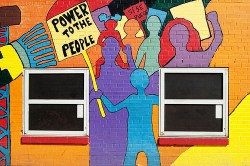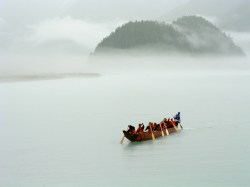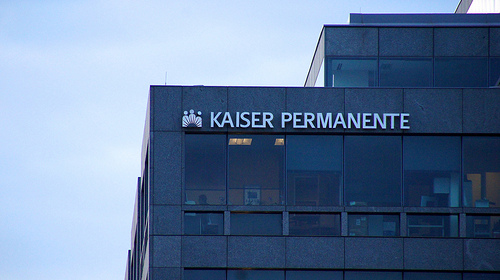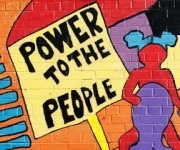
Photo by Matthew David Powell.
The first Rio Earth Summit in 1992 marked a heady period for environmentalists — Mother Earth had been declared TIME’s Person of Year, and the largest gathering of heads of state ever in the Earth’s history converged on Rio to put their signatures on new treaties to protect biodiversity and control climate change, and to draft global guidelines for forest conservation and human development. I had just helped to start Conservation International after leading The Nature Conservancy’s international program. There was a sense that we’d arrived. Finally, finally, after decades toiling in our rabbit holes, pushing for change on a global scale, we were taking a giant leap forward. I left the conference buoyed.
But what I remember just as vividly now was a moment near the end of the summit when I found myself next to then-Sen. Albert Gore. Could we live up to these bold promises back home? I asked him. “I don’t think so,” he said.
He was right, of course. The last two decades have seen the United States abdicating leadership on climate change, and the world hurtling toward dangerous and chaotic environmental tipping points.
The failed promise of Rio is not that implementation of global conventions proved overwhelmingly difficult – we always knew it would be hard — but that we fooled ourselves, even for a moment, into staking our future in top-down methods.
World leaders meet in Rio next week for another Earth Summit. This time around, we should push for top-level global deals like the end of fossil fuel subsidies. But the world’s leadership should also be investing time and renewed energy in leveraging and scaling the efforts that have actually demonstrated dramatic systemic change over these 20 years: those at the local and regional level, the level where our actions and their impact are most relevant to the 7 billion of us restlessly filling up this planet.
When we look at the world through this lens we see reasons for hope that have been building these 20 years.
Indeed, it’s not the legacy of Rio that we should be looking to, but Brazil’s eighth largest city, Curitiba, where three-time Mayor Jamie Lerner, a visionary architect and planner, has helped shape a fascinating, living, breathing, evolving 21st-century city. The low-carbon, people-centered ideas cultivated there have spread all over the world — from its rapid, affordable bus transit to its expansion and creative use of green space to its attention to opportunities for the poor. Using similar foresighted investments in transit, my hometown of Portland, Ore., has actually hit greenhouse reduction goals of the sort envisioned in Rio two decades ago.
Looking back through that local lens, we see what is possible, not what has failed. We see what can happen when you release the energy of people working at home, rooted in its peculiarities, drawing on all the immediacy of local self-interest in improving the health and resilience of the communities and ecosystems on which people depend.
Around the time of the 1992 Earth Summit, I had been working with leaders in a dozen Latin American countries, urging them to protect the 50 percent of tropical rain forests that remained. What I realized, with the help of some finely grained maps that we produced at Conservation International and Ecotrust in the early 1990s, was that the temperate rain forests of my home, along the northwest coast of North America, had been reduced to less than 50 percent of their original cover as well. It was time for me to get working at home.
These two decades at Ecotrust, we have built a vibrant marketplace for restorative businesses in America’s first LEED Gold historic building, helped to develop a regional environmental bank, set up a forest investment fund around the principles of restoration and local jobs, and honored and supported nearly 50 regional indigenous leaders working to create social, economic, and environmental well-being for their tribal homelands.
We’ve learned that we can create new institutions for the systems upon which we all depend — farming that takes care of the farmer, as well as his land, water, and marketplace; fisheries that regenerate fishing communities; forestry that mimics nature, enhancing forest health while generating a competitive return. But it takes radical and revolutionary experimentation that is 180 degrees to convention.
And now it will take a radical networking of those experiments to put the world on a more resilient path — where we can adapt to and influence the massive global environmental and societal shifts that are already in motion today.
In that vein, the People’s Convention in Rio, the sideshow gathering for grassroots leaders that will draw few headlines, is the convention we need to be watching. This is where the transfer of winning ideas will happen between scrappy changemakers working on indigenous rights and neighborhood toxins and urban agriculture in communities all around the world.

Members of the Haisla First Nation in British Columbia using people power — literally — to make change.
Last September, we brought 50 regional change agents from around the world to Portland to convene a network to promote ideas scalable across regions — a network that could, for instance, develop people- and nature-centered responses to similar proposals for massive fossil fuel pipelines in northwestern Canada and northern Australia. People in the room were decorated with success — founders and heads of some of the world’s leading NGOs, ambassadors to the United Nations, a president of a South Pacific nation, social banking entrepreneurs, indigenous leaders — but the mood was starkly realistic. There was a sense that the time had come to make critical choices: Would we think as spenders or savers, live as natives or colonists? “We’re hanging on by our fingernails,” said Gerald Amos, a leader of the Haisla First Nation in British Columbia.
I think of that meeting in contrast to our celebratory mood in Rio in 1992. Our latest gathering was more tangible and more revolutionary. We have no illusions about how and where to work. It is together, close to the ground, improving the places we call home. It’s a hopeful journey towards radical change.



